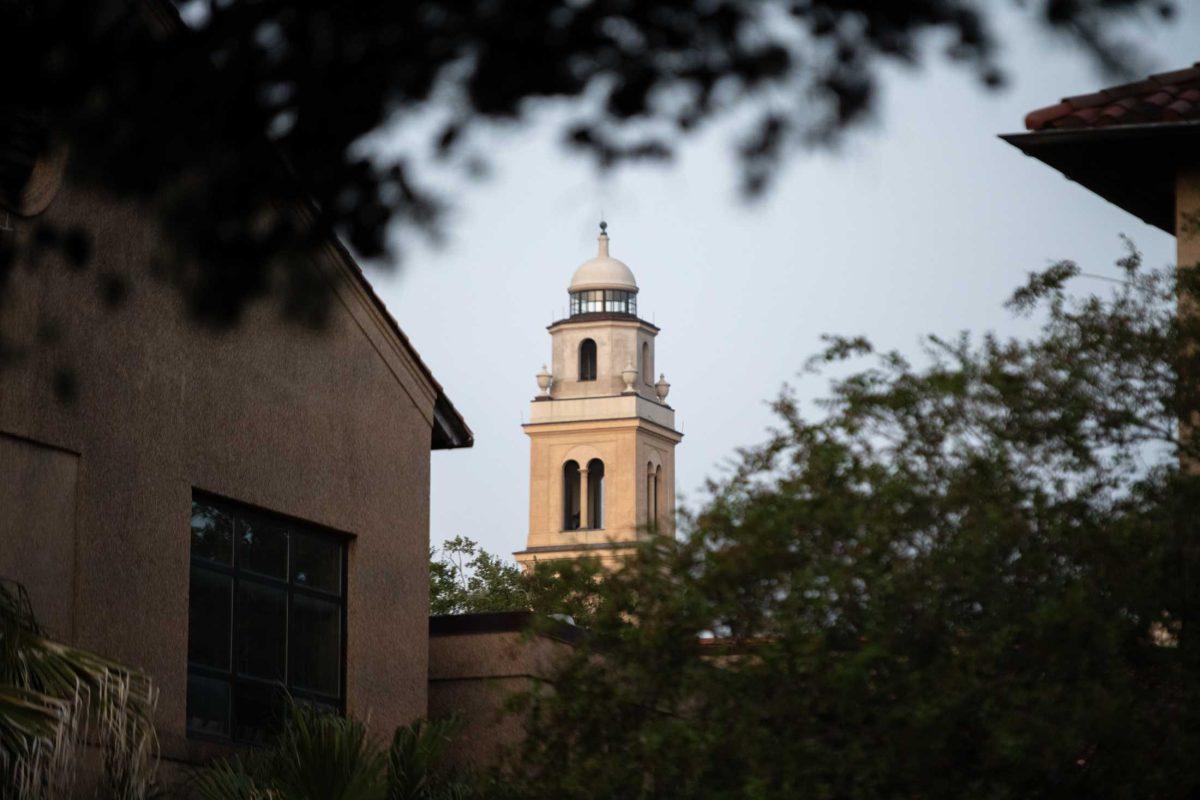
Reagan Cotten
Memorial Tower sits past the buildings and trees on Monday, Oct. 2, 2023, near Lockett Hall in Baton Rouge, La.
As President Trump’s campaign promise to eliminate the Department of Education gets closer to being fulfilled, LSU’s Department of Political Science Chair Robert Hogan says the potential elimination could alter the landscape of higher education in devastating ways.
Programs like the Pell Grant and FAFSA loans could cease to exist, closing the door to higher education for lower and middle-income students. With many on-campus jobs using government funds to pay student employees, the work-study program may also be affected if the department is dismembered. Without this aid, students may have to seek off-campus employment to pay for groceries, rent and other necessities.
“College is already unaffordable for a large number of people, and it’s going to become unaffordable for a whole new group of people,” Hogan said.
The Department of Education handles various issues unique to education policy and is partly responsible for creating a direction or agenda for American education policy, according to Hogan. It awards around $120 billion to student aid programs, including Pell Grants, work-study, TEACH grants and federal family education loans to universities nationwide, according to their 2023-2024 budget summary.
“There’s really a belief that the Education Department is trying to require certain things or they’re trying to set the agenda of what people study and learn about,” explained Hogan.
Hogan suspects that Trump’s decision to dismantle this “federal overreach” may stem from the conservative ideology that our government should be much smaller.
“It’s not pushing the agenda that he thinks should be pushed,” Hogan said.
The Department of Education was officially founded in the late 1970s under the Carter administration in response to the Space Race between the U.S. and Russia, as the government looked to push math and science in elementary schools in pursuit of conquering the final frontier.
Additionally, the government wanted areas of high poverty to succeed – thus creating the Pell Grant. The Pell Grant specifically targets families below the poverty line and is based exclusively on financial need. LSU received a little more than $288 million of federal aid in 2024 specifically for this grant, according to the LSU Operating Budget.
During the early 2000s, the Bush administration’s “No Child Left Behind” program, which placed accountability standards for student performance, was favored by many conservatives.
“Conservatives were really into that, and they liked a sort of muscular education department if it was doing what they thought it should be,” Hogan said. “But now it has moved into the realm of seeing the Education Department as the boogeyman and it needs to be gutted.”
In addition to federal aid, Louisiana offers financial assistance to college students through the TOPS program. This aid comes as GPA-based scholarships to Louisiana residents to help cover tuition costs, though typically excluding room and board. Students rely on FAFSA loans to cover any additional fees.
Hogan, who received his master’s and doctoral degrees in political science from Rice University, explained that private universities are at less of a disadvantage if the department is dismantled.
“Unlike private universities with huge endowments, we don’t have anything to spare,” Hogan said.
Hogan explained that LSU’s federal funds are allocated to more than just student scholarships. Government funds pay for building maintenance, electricity and other utilities.
“To eliminate the only tool in the toolbox, now that’s something strange,” Hogan said.
Hogan encouraged LSU students to reflect on their education and how much schooling they want to pursue. Without government-issued financial aid, students struck by poverty will find it difficult to continue their education after high school.
“We were putting people on the moon,” Hogan said. “We could solve any problem. You just need a government program.”
A previous version of this story erroneously stated President Trump fired half of government employees. We regret this error and the article has since been corrected.